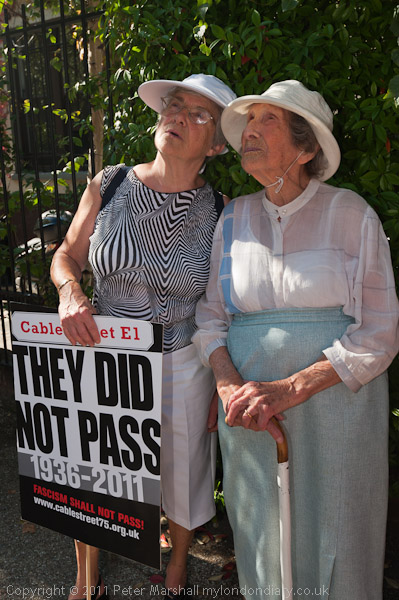Cable Street occupies an important place in British left-wing history, and like all such events is shrouded in myth. I’ve been criticised by some for pointing out some of these, but I think it never belittles our history to get the facts right. Just as last month, when the EDL tried to march into the East End, the people of the East End never got to fight the fascists. The battle in 1936 was with the police, and the people were successful. It was a victory for the people, and one against the fascists even if they didn’t actually come into contact.
This year the police were fighting with the EDL at times, and it was the police who stopped the EDL, as well as succeeding in stopping the people from the East End getting at them, although I saw no real attempt made to breach the police lines. The protesters against the EDL in 2011 remained peaceful, except when a coach full of EDL stopped in the area and started to insult people.
Back in 1936, the East End didn’t stop the fascists, though on that one day they did manage to stop Mosley marching through. But the fascists were busy inside the East End then. It was also a time when real battles were being fought against them in Spain, and several thousands of brave men, many of them communists or anarchists, including workers from the East End, defied the government and went to fight.
Relatively few of those who went to Spain – or who stopped the police in Cable St – are still alive, but the memory of what they did lives on, not least through the splendid mural in Cable St itself.
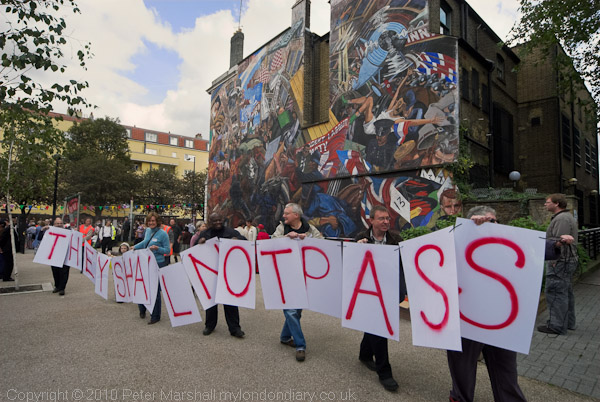
‘They shall not pass’ in the 70th anniversary celebrations in 2006
The picture taken 5 years ago, when the celebrations were a little smaller and more local makes the connection between Spain and Cable St clear. This year there were people from all over the UK present, including quite a few Indian groups as well as the local Bangladeshi organisations.
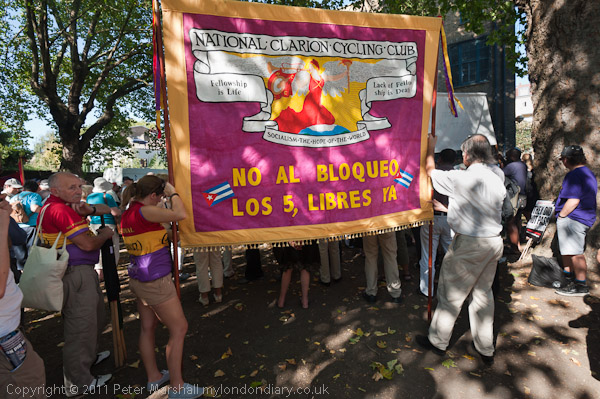
2011: The National Clarion Cycling Club banner also supports the ‘Cuban 5’
This year’s 75th anniversary also included several groups connected to Spain, including the International Brigade Memorial Trust, the Connelly Association and the National Clarion Cycling Club, who had taken part in an anniversary ride from Scotland. Their banner was also that of the ‘Centuria Anglesa Tom Mann’
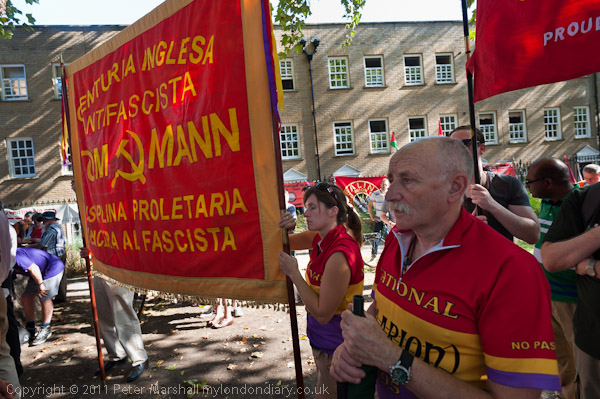
And on the other side is the Tom Mann brigade banner
More about the 70th anniversary in the second story down this page of My London Diary, and this years event is Battle of Cable St – 75 Years.
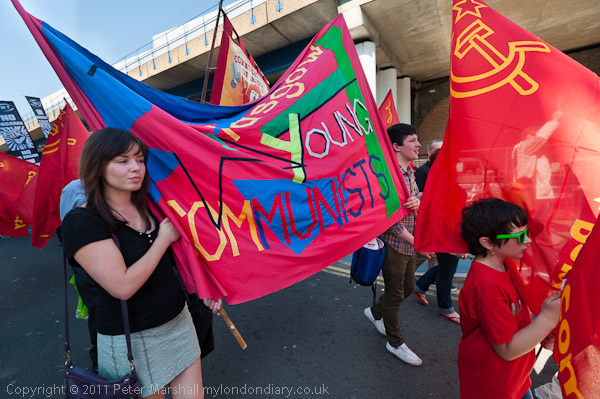
I took two frames with this woman carrying a banner, the second with the red flag hiding the boy in the green glasses, and I’m not sure which of the two I prefer. The main photographic problem was one of contrast, with a huge difference between the shade and sunlit areas. Even the picture above, where the sunny areas were small required some fairly extreme burning in.
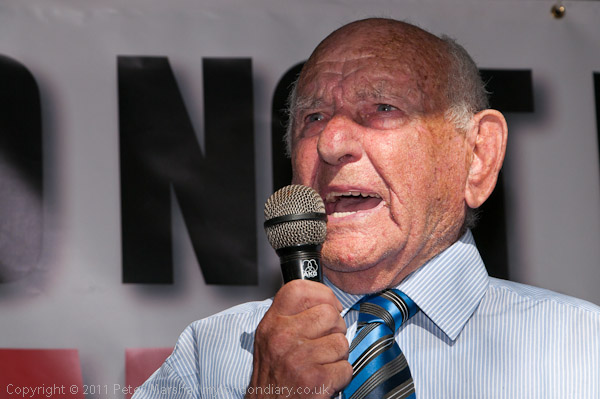
Of course fill-flash becomes very useful in these situations. When Max Levitas was speaking, one of my friends standing next to me was cursing as he didn’t have his flash with him; Max as the image above shows, was standing with his face in the light and forehead in shade, and flash was really essential to cope with this. Usually I have the flash set to -2/3 stop, and I don’t think the exposure can take the flash into account, so I generally use -1/3 stop of exposure compensation with it.
Another image where it was essential was this of 106 year old Hetty Bower, who was 31 at the time of the battle, and certainly the oldest person on the march – she walked the whole way from Aldgate. She was looking up at the mural when I took this picture of her with a friend.
